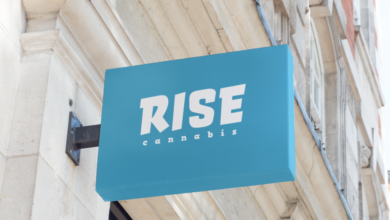AWS SAA-C03 Certification Explained: Skills You Must Master Before the Exam

Why AWS SAA-C03 Is Not Just an “AWS Basics” Exam
The AWS Certified Solutions Architect Associate SAA-C03 exam is often described as an associate-level certification, but that label can be misleading. The exam does not test simple service definitions or isolated facts. Instead, it evaluates how well you can design, evaluate, and improve cloud architectures under real-world constraints.
Candidates who approach SAA-C03 as a memorization-heavy exam usually struggle. Those who succeed understand that AWS wants to validate decision-making skills, not just service familiarity.
How AWS SAA-C03 Thinks About “Skill”
AWS does not assess skills in isolation. The exam assumes you can:
- Compare services, not just name them
- Choose architectures based on requirements
- Balance cost, performance, availability, and security
Every question is framed around trade-offs.
Skill Group 1: Designing Resilient Architectures
This is one of the most heavily tested areas in SAA-C03.
You must be comfortable with:
- Multi-AZ vs Multi-Region designs
- Fault tolerance vs high availability
- Load balancing behavior under failure
- Stateless vs stateful application design
AWS questions often ask what happens when something fails, not when everything works.
Skill Group 2: Choosing the Right Compute and Storage Mix
SAA-C03 expects you to understand why one service fits better than another, not just what each service does.
This includes:
- EC2 vs Lambda vs containers
- EBS vs EFS vs S3 trade-offs
- Performance characteristics and limits
- Scaling behavior under demand changes
Wrong answers often sound “technically correct” but don’t fit the scenario’s constraints.
Skill Group 3: Cost-Aware Architecture Decisions
Cost optimization is not optional in SAA-C03.
You are expected to:
- Identify unnecessary overprovisioning
- Choose managed services where appropriate
- Understand pricing models at a high level
- Balance cost with reliability
Architectures that ignore cost are often marked incorrect even if they work technically.
Skill Group 4: Security Built Into Architecture Design
Security in SAA-C03 is architectural, not operational.
You must understand:
- IAM role design and least privilege
- Security groups vs NACLs
- Encryption choices at rest and in transit
- Shared responsibility boundaries
Security questions often test where a control should be applied, not how to configure it.
Skill Group 5: Networking Logic and Traffic Flow
Networking questions trip up many candidates because they require visualizing traffic flow.
You should be able to reason about:
- VPC design and subnet isolation
- Route tables and gateways
- Private vs public access patterns
- Hybrid connectivity scenarios
AWS frequently asks what traffic can or cannot reach a resource—and why.
How the Exam Brings These Skills Together
SAA-C03 questions rarely test a single skill. A typical scenario might combine:
- High availability requirements
- Cost constraints
- Security boundaries
- Performance expectations
Understanding how skills interact is what separates pass-level candidates from confident ones.
Candidates who want a clearer view of how AWS structures these domains and what the exam is truly measuring often review neutral certification and exam-structure resources. Many use Cert Empire’s AWS exam information to align their preparation with the actual SAA-C03 blueprint rather than scattered study advice.
This alignment helps candidates focus on skill mastery instead of surface-level coverage.
What SAA-C03 Does NOT Reward
Understanding what not to focus on is just as important.
The exam does not reward:
- Memorizing service limits without context
- Deep configuration syntax
- Rare edge-case features
- Overengineering solutions
AWS prefers simple, scalable, and well-justified designs.
How to Prepare Skills the Right Way
Learn Services Through Use Cases
Instead of learning services individually, learn:
- When AWS recommends them
- What problem they solve best
- What they replace or simplify
This makes elimination-based questions much easier.
Practice Architecture Reasoning, Not Recall
Practice should train you to ask:
- What is the main requirement here?
- What constraint matters most?
- Which option meets all requirements with least complexity?
Some candidates reinforce this stage by validating their reasoning with explanation-driven practice questions after completing conceptual study. Used correctly, resources like https://certmage.com/ can help test architectural thinking and highlight weak areas without encouraging memorization.
Why Shortcuts Fail Harder in AWS Exams
AWS continuously updates services and best practices. Shortcut-based prep:
- Ages quickly
- Misses context
- Breaks when services evolve
Skill-based preparation scales with AWS changes. Memorization does not.
What AWS SAA-C03 Success Looks Like
Candidates who prepare the right way:
- Read questions slowly and identify core requirements
- Eliminate answers that violate constraints
- Choose designs that balance trade-offs
- Feel confident explaining why an answer is correct
They think like architects, not test-takers.
Final Thoughts
The AWS SAA-C03 certification is a test of architectural thinking, not service trivia. Candidates who master core design skills—resilience, cost awareness, security, and scalability—consistently perform better than those chasing shortcuts or memorized patterns.
Preparing the right way doesn’t just help you pass the exam. It prepares you to design real AWS solutions with confidence, clarity, and credibility.





